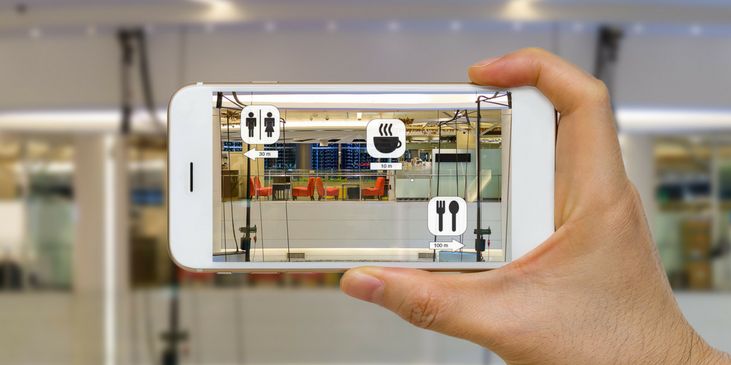Experts predict that by 2020 customer experience (CX) will overtake price and product as the biggest influence on purchasing decisions. With time running out to prepare for this shift in consumer focus, it’s important businesses promptly identify technology and processes to improve CX across their operations – and to help, here are 5 CX trends to embrace in 2018.
1. Proactive CX
In some industries, manufacturing
In 2018, as everything from kettles to coat racks becomes connected to the internet, we expect this trend to spread to consumer products too. When you can monitor the performance of your products remotely, you can simply contact customers via their preferred channel to arrange a repair, should you notice a decrease in performance – some equipment can even be repaired remotely.
This perfectly fits Harvard Business Review's research revealing that the most important factor in customer loyalty is a reduction in the effort of their customer journey.
You don’t need to wait to incorporate an Internet of Things device to get started with proactive CX though.Simply keeping in touch with customers throughout their journey with your brand enables you to exceed expectations by ensuring they’re satisfied at every touchpoint – rather than simply reacting to feedback. You can now even monitor customer visits to cancellation, refund or FAQ pages at an individual level, letting you know when they might require some attention.
And if you’re worrying about pestering customers, research shows that over 75% of consumers actually want to be contacted proactively by organisations.
2. Time-Saving Personalisation
As machine-learning, analytic, and data-gathering technologies become more widely available and more intelligent, the level of personalisation you’re able to offer increases too. This allows you to move from understanding what customers are doing now, to accurately predicting what they’ll want to do in the future – so you can offer only the experiences that are relevant and enjoyable.
This can save your customers from having to wade through content, products and touchpoints they aren’t interested in, saving them time and effort. Or, to frame it more positively, it enables you to provide more experiences that will delight them.
And it works too. In fact, 72% of customers saying that valuing their time is the most important action a company can take to provide them with good service.
3. Everything On-Demand
When discussing advances in technology you’ll often be told that laziness or impatience drives innovations like Netflix or Amazon Dash. In reality, on-demand culture is actually fuelled by a shift in the way we think about status.
Previously, an abundance of leisure time singled you out as a VIP and gave rise to the idea that exclusive golf courses, spas and yacht clubs were the meeting places of the elite. In today's society, the best way to ensure you're perceived as a big deal is to be so busy you can't get by without cookies on-demand, healthcare on-demand, and everything delivered within an hour.
In 2018, if you’re able to shorten the distance between consumers and the products, services or functionalities they need, you’ll also improve the customer experience for high-achievers.
4. Augmented or Virtual Reality
Imagine a world in which you could taste
You might be waiting long past 2018 to implement that technology, but you can already tantalise a customer’s most dominant sense with fully-immersive, 360-degree augmented or virtual reality experiences.
Widely available AR and VR technologies enable customers to
Not only will this help nudge customers towards making a purchase, but it will also help prevent them second-guessing their decision, therefore reducing returns and refunds. This removes one of the most painful steps on the customer journey for many customers.
5. Frictionless Omnichannel Customer Journeys
The idea of a frictionless customer journey is something we’ve long championed, but now that half of all customer interactions happen during a multi-channel journey, brands simply can’t afford to ignore one of the most fundamental CX trends of 2018 – omnichannel, rather than multi-channel, customer experiences.
Rather than considering different channels as separate journeys, omnichannel optimisation looks at every possible step of the customer journey, across all platforms, devices and channels, as one cohesive journey.
Fitting all those disparate elements seamlessly into the bigger picture will be a challenge all brands need to answer in 2018, as customers expect a consistent and increasingly effortless experience, no matter which platform, device or channel they’re using.
The Importance of Customer Experience in 2018
Studies show that just 5% increase in customer retention can increase a company’s profitability by 75%. That's why it’s so important for brands to put customer experience at the heart of any growth strategy in the coming year.
If you have one aim in 2018, it should be to put systems in place that enable you to provide customer experiences that make consumers’ lives easier throughout a better-connected customer journey.
Customer journey mapping is an invaluable tool to help pursue this goal by creating a visual record of every customer interaction, allowing you to see the customer journey through their eyes. This gives you insight into any gaps and disconnects in the customer journey that can be filled to better meet their needs.
Click here to download our Introduction to Customer Journey Mapping ebook and find out more about what customer journey mapping can do for your business – or click the image below.



